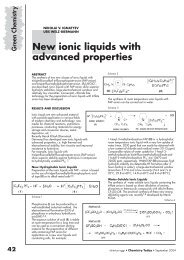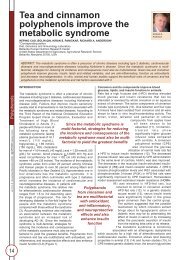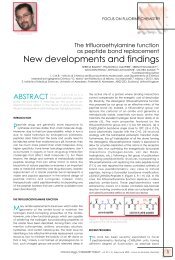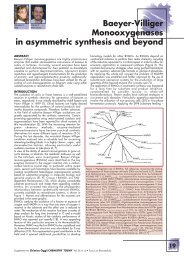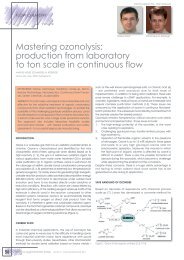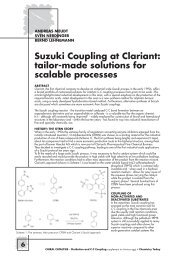Lake Como 2|4 October 2011 - CHIMICA Oggi/Chemistry Today
Lake Como 2|4 October 2011 - CHIMICA Oggi/Chemistry Today
Lake Como 2|4 October 2011 - CHIMICA Oggi/Chemistry Today
You also want an ePaper? Increase the reach of your titles
YUMPU automatically turns print PDFs into web optimized ePapers that Google loves.
SPEAKER SPEAKER SPEAKER SPEAKER SPEAKER SPEAKER SPEAKER SPEAKER SPEAKER SPEAKER SPEAKER SPEAKER SPEAKER SPEAKER SPEAKER SPEAKER SPEAKER SPEAKER SPEAKER SPEAKER SPEAKER SPEAKER SPEAKER SPEAKER SPEAKER SPEAKER SPEAKER SPEAKER SPEAKER SPEAKER SPEAKER SPEAKER SPEAKER SPEAKER SPEAKER SPEAKER SPEAKER SPEAKER SPEAKER SPEAKER SPEAKER SPEAKER SPEAKER SPEAKER SPEAKER SPEAKER SPEAKER SPEAKER SPEAKER SPEAKER SPEAKER SPEAKER SPEAKER SPEAKER<br />
ABSTRACT<br />
Doing the reaction isn’t everything<br />
David J. Ager<br />
DSM Pharma Chemicals - USA<br />
BIOGRAPHY<br />
David J. Ager<br />
David Ager received a B.Sc. from Imperial College, London, and a Ph.D. from the University<br />
of Cambridge.<br />
In 1977 he was awarded a Science Research Council Postdoctoral Fellowship that allowed<br />
him to collaborate with Professor Richard Cookson FRS at the University of Southampton.<br />
In 1979 he joined the faculty of the University of Liverpool as a Senior Demonstrator. This was<br />
followed by an assistant professor position at the University of Toledo in Ohio.<br />
In 1986, he joined the NutraSweet Company’s Research and Development group as a<br />
Monsanto Fellow. NSC Technologies came out of NutraSweet R&D.<br />
In 1999, NSC was sold to Great <strong>Lake</strong>s Fine Chemicals; Dave was a Fellow with<br />
GLFC, responsible for the development of new synthetic methodology.<br />
He then left GLFC and has worked as a consultant on chiral and process<br />
chemistry.<br />
He joined DSM at the beginning of 2002 as the competence<br />
manager for homogeneous catalysis and in January 2006, moved<br />
into the role of Principal Scientist.<br />
There are many examples of reactions performed in a fl ow regime, especially when hazardous or high-energy intermediates are<br />
involved. In many cases, a batch method is used to isolate the desired product and this can be economical as it fi ts into an existing<br />
plant. An alternative is to isolate the product in a continuous manner and this is the focus of this presentation. In particular the use<br />
of centrifugal contact separators will be described. In addition to being a method to continuously separate immiscible liquids, the<br />
equipment can also be used to perform reactions at the same time.<br />
4<br />
<strong>Lake</strong> <strong>Como</strong><br />
<strong>2|4</strong> <strong>October</strong> <strong>2011</strong>



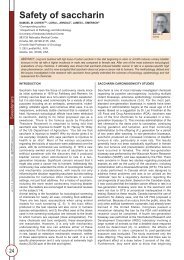
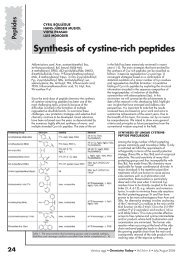
![Pietro Delogu [modalità compatibilità]](https://img.yumpu.com/12255149/1/190x135/pietro-delogu-modalita-compatibilita.jpg?quality=85)
